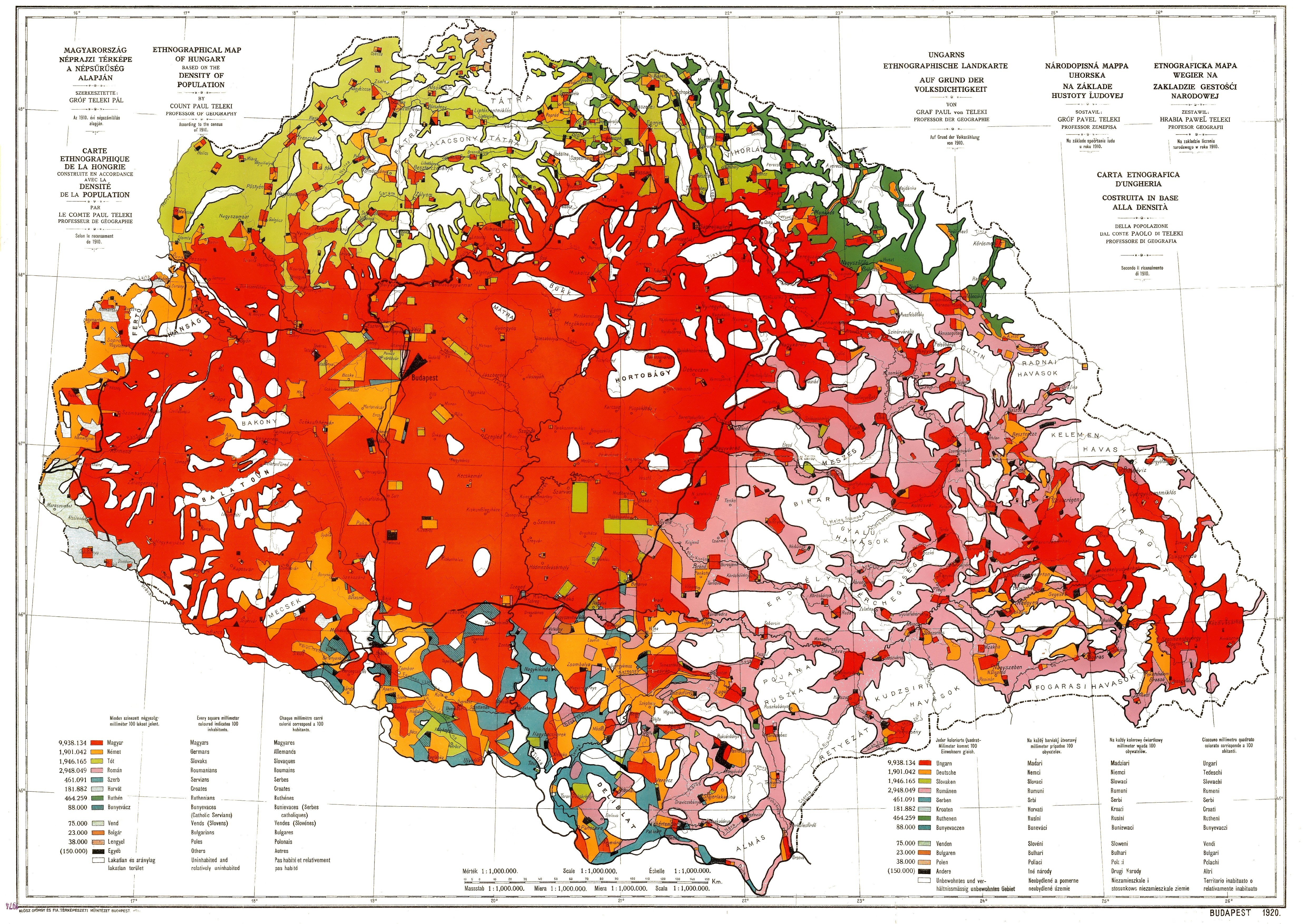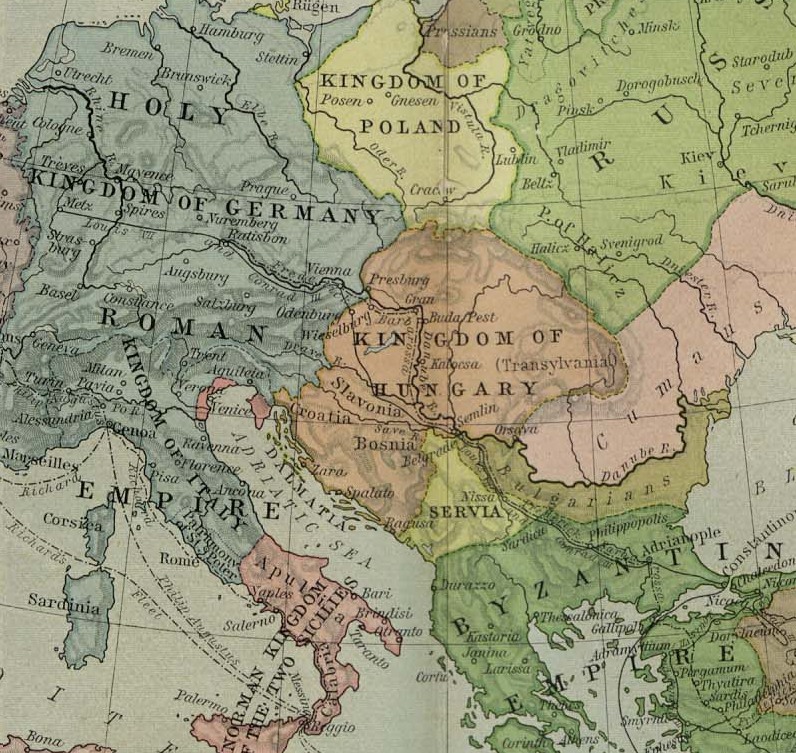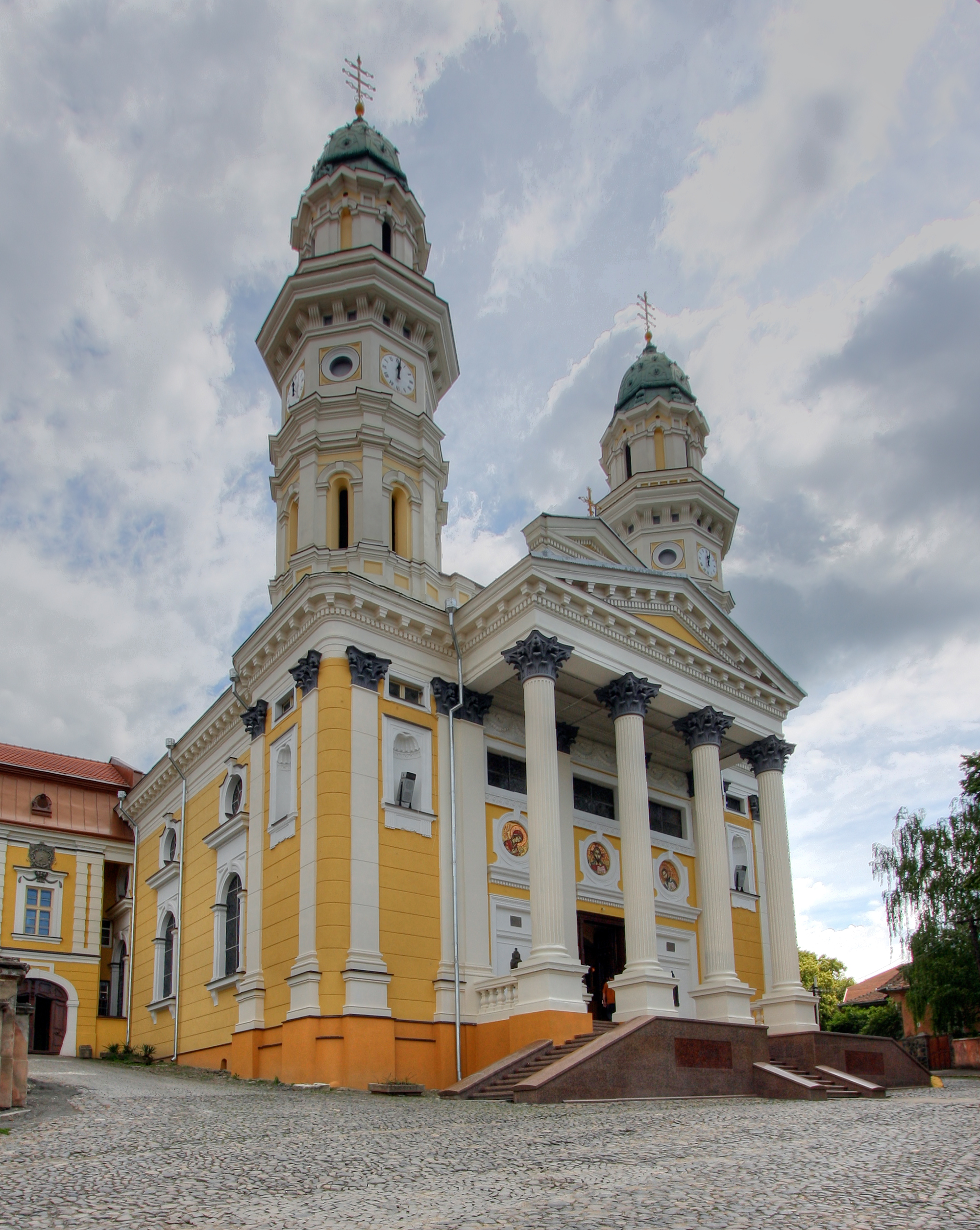|
Magyaron
Magyaron also Magyarons ( uk, Мадярони, be, Мадзяроны, sk, Maďarón, russian: Мадяроны, rue, Мадяроны, pl, Madziaroni) is the name of a Transcarpathian ethno-cultural group, which has an openly Hungarian orientation. They renounced their native language, culture and religion and promoted Magyarization of the Rusyn and Ukrainian population. The Magyarons did not embrace the Ukrainian identity of the Ruthenians in Carpathian Ruthenia but maintained their separate Rusyns identity. From 1920 to 1940, the group promoted the idea of re-joining Subcarpathian Rus' to Hungary.Hungary – Social and economic developments". |
Magyarization
Magyarization ( , also ''Hungarization'', ''Hungarianization''; hu, magyarosítás), after "Magyar"—the Hungarian autonym—was an assimilation or acculturation process by which non-Hungarian nationals living in Austro-Hungarian Transleithania adopted the Hungarian national identity and language in the period between the Compromise of 1867 and Austria-Hungary's dissolution in 1918. Magyarization occurred both voluntarily and as a result of social pressure, and was mandated in certain respects by specific government policies. Before the World War I, only three European countries declared ethnic minority rights, and enacted minority-protecting laws: the first was Hungary (1849 and 1868), the second was Austria (1867), and the third was Belgium (1898). In contrast, the legal systems of other pre-WW1 era European countries did not allow the use of European minority languages in primary schools, in cultural institutions, in offices of public administration and at the legal courts ... [...More Info...] [...Related Items...] OR: [Wikipedia] [Google] [Baidu] |
Carpathian Ruthenia
Carpathian Ruthenia ( rue, Карпатьска Русь, Karpat'ska Rus'; uk, Закарпаття, Zakarpattia; sk, Podkarpatská Rus; hu, Kárpátalja; ro, Transcarpatia; pl, Zakarpacie); cz, Podkarpatská Rus; german: Karpatenukraine is a historical region on the border between Central and Eastern Europe, mostly located in western Ukraine's Zakarpattia Oblast, with smaller parts in eastern Slovakia (largely in Prešov Region and Košice Region) and the Lemko Region in Poland. From the Hungarian conquest of the Carpathian Basin (in the 10th century) to the end of World War I (Treaty of Trianon in 1920), most of this region was part of the Kingdom of Hungary. In the interwar period, it was part of the First and Second Czechoslovak Republic. Before World War II the region was annexed by the Kingdom of Hungary once again. After the war, it was annexed by the Soviet Union and became part of Ukrainian Soviet Socialist Republic. It is an ethnically diverse region, inhab ... [...More Info...] [...Related Items...] OR: [Wikipedia] [Google] [Baidu] |
Carpathian Ruthenia
Carpathian Ruthenia ( rue, Карпатьска Русь, Karpat'ska Rus'; uk, Закарпаття, Zakarpattia; sk, Podkarpatská Rus; hu, Kárpátalja; ro, Transcarpatia; pl, Zakarpacie); cz, Podkarpatská Rus; german: Karpatenukraine is a historical region on the border between Central and Eastern Europe, mostly located in western Ukraine's Zakarpattia Oblast, with smaller parts in eastern Slovakia (largely in Prešov Region and Košice Region) and the Lemko Region in Poland. From the Hungarian conquest of the Carpathian Basin (in the 10th century) to the end of World War I (Treaty of Trianon in 1920), most of this region was part of the Kingdom of Hungary. In the interwar period, it was part of the First and Second Czechoslovak Republic. Before World War II the region was annexed by the Kingdom of Hungary once again. After the war, it was annexed by the Soviet Union and became part of Ukrainian Soviet Socialist Republic. It is an ethnically diverse region, inhab ... [...More Info...] [...Related Items...] OR: [Wikipedia] [Google] [Baidu] |
Magyarization
Magyarization ( , also ''Hungarization'', ''Hungarianization''; hu, magyarosítás), after "Magyar"—the Hungarian autonym—was an assimilation or acculturation process by which non-Hungarian nationals living in Austro-Hungarian Transleithania adopted the Hungarian national identity and language in the period between the Compromise of 1867 and Austria-Hungary's dissolution in 1918. Magyarization occurred both voluntarily and as a result of social pressure, and was mandated in certain respects by specific government policies. Before the World War I, only three European countries declared ethnic minority rights, and enacted minority-protecting laws: the first was Hungary (1849 and 1868), the second was Austria (1867), and the third was Belgium (1898). In contrast, the legal systems of other pre-WW1 era European countries did not allow the use of European minority languages in primary schools, in cultural institutions, in offices of public administration and at the legal courts ... [...More Info...] [...Related Items...] OR: [Wikipedia] [Google] [Baidu] |
Uzhhorod
Uzhhorod ( uk, У́жгород, , ; ) is a city and municipality on the river Uzh in western Ukraine, at the border with Slovakia and near the border with Hungary. The city is approximately equidistant from the Baltic, the Adriatic and the Black Sea (650–690 km) making it the most inland city in this part of Europe. It is the administrative center of Zakarpattia Oblast (region), as well as the administrative center of the Uzhhorod Raion (district) within the oblast. Population: Name The city's earliest known name is ''Ungvár'', from Hungarian ''Ung'' ( River Uzh) and ''vár'' "castle, fortress", originally referring to a castle outside the city (probably Nevytske Castle). The name ''Uzhhorod'' was coined in early 19th century Slavophile circles as a literal translation of the name ''Ungvár''. The city officially adopted this name some time after 1920, under Czechoslovak administration. The names of the city also include: en, link=no, Uzhgorod (before 1996); rue, ... [...More Info...] [...Related Items...] OR: [Wikipedia] [Google] [Baidu] |
Demographics Of Czechoslovakia
Czechoslovakia had a population of 15.6 million Czechs, Slovaks, Hungarians, Romani people, Silesians, Ruthenians, Ukrainians, Germans, Poles and Jews. The ethnic population of Czechoslovakia changed overtime from Sudeten Germans being the most prominent ethnicity to Czechs and Slovaks making up two-thirds of the demographic. Amongst this demographic there was also a diverse range of religions with Roman Catholic being the most prominent. This population has been found to have had an increasing growth rate that had a declining trajectory. The population density was approximately 121 persons per square kilometre with the highest population density being in Moravia of 154 persons per square kilometre. Population Czechoslovakia had a population, as of 1991, of 15.6 million, of which by ethnicity 62.8% were Czechs (including Moravians), 31% Slovaks, 3.8% Hungarians, 0.7% Roma, and 0.4% Silesians. Smaller groups of Rusyns, Ukrainians, Germans, Austrians, Poles and Jews (the post-H ... [...More Info...] [...Related Items...] OR: [Wikipedia] [Google] [Baidu] |
History Of Zakarpattia Oblast
The Zakarpattia Oblast ( uk, Закарпатська область, Zakarpatska oblast) is an administrative oblast located in western Ukraine, mostly coterminous with the historical region of Carpathian Ruthenia. Its administrative centre is the city of Uzhhorod, Other major cities within the oblast include Mukachevo, Khust, Berehove, and Chop, the last of which is home to railroad transport infrastructure. Zakarpattia Oblast was established on 22 January 1946, after Czechoslovakia gave up its claim to the territory of ''Subcarpathian Ruthenia'' ( cs, Podkarpatská Rus) under a treaty between Czechoslovakia and the Soviet Union. The territory of ''Subcarpathian Ruthenia'' was then taken over by the Soviet Union and became part of the Ukrainian Soviet Socialist Republic. Some scholars say that during the Ukrainian independence referendum held in 1991, Zakarpatska Oblast voters were given a separate option on whether or not they favoured autonomy for the region. Although a ... [...More Info...] [...Related Items...] OR: [Wikipedia] [Google] [Baidu] |
Hungarian Irredentism
Hungarian irredentism or Greater Hungary ( hu, Nagy-Magyarország) are irredentist political ideas concerning redemption of territories of the historical Kingdom of Hungary. Targeting at least to regain control over Hungarian-populated areas in Hungary's neighbouring countries. Hungarian historiography uses the term "Historic Hungary" (). "Whole Hungary" () is also commonly used by supporters of this ideology. The Treaty of Trianon defined the current borders of Hungary and, compared against the claims of the pre-war Kingdom, post-Trianon Hungary had approximately 72% less land stake and about two-thirds fewer inhabitants, almost 5 million of these being of Hungarian ethnicity. However, only 54% of the inhabitants of the pre-war Kingdom of Hungary were Hungarians before World War I. Following the treaty's instatement, Hungarian leaders became inclined towards revoking some of its terms. This political aim gained greater attention and was a serious national concern up through the S ... [...More Info...] [...Related Items...] OR: [Wikipedia] [Google] [Baidu] |
Little Russian Identity
The Little Russian identity was a cultural, political, and ethnic self-identificationКотенко А. Л., Мартынюк О. В., Миллер А. И«Малоросс»: эволюция понятия до первой мировой войны/ref> of a population of Ukraine who aligned themselves as one of the constituent parts of the triune Russian nationality. The Little Russian identity combined the cultures of Imperial Russia and Cossack Hetmanate. The beginning of the development of the Little Russian identity in the Cossack Hetmanate dates back to the late 18th century. Ilya PrizelNational identity and foreign policy: nationalism and leadership in Poland (1998) p.304 The new ethnonym was promoted instead of the widespread name Ruthenian (''Rusyny''; русини). The struggle between the two projects of national identity lasted until the dissolution of the Russian Empire. The revolutionary events of 1917 led to a rapid strengthening of the Ukrainian national idea, ... [...More Info...] [...Related Items...] OR: [Wikipedia] [Google] [Baidu] |
Greek Catholic Eparchy Of Mukachevo
The Greek Catholic Eparchy of Mukachevo is an eparchy (diocese) associated with the Ruthenian Greek Catholic Church under an unidentified status and territory located in the west of Ukraine, roughly equivalent with Zakarpatska Oblast. The eparchy was created by the Pope Clement XIV in 1771. The eparchy is in full communion with the Catholic Church. Its parishes observe the Byzantine Rite which is also celebrated by the majority of Orthodox Christians, and as provided for in the original terms of the Union of Uzhhorod. The eparchy is a mother eparchy of at least four modern metropoles, i.e., the Slovak Greek Catholic Church, the Romanian Greek Catholic Church, the Hungarian Greek Catholic Church, and the Byzantine Catholic Metropolitan Church of Pittsburgh in the United States.Havrosh, O. Bishop Milan: "Eparchy of Mukachevo belongs to the biggest in Ukraine" (Владика Мілан: «Мукачівська єпархія належить до найбільших в ... [...More Info...] [...Related Items...] OR: [Wikipedia] [Google] [Baidu] |
Ukraine
Ukraine ( uk, Україна, Ukraïna, ) is a country in Eastern Europe. It is the second-largest European country after Russia, which it borders to the east and northeast. Ukraine covers approximately . Prior to the ongoing Russian invasion, it was the eighth-most populous country in Europe, with a population of around 41 million people. It is also bordered by Belarus to the north; by Poland, Slovakia, and Hungary to the west; and by Romania and Moldova to the southwest; with a coastline along the Black Sea and the Sea of Azov to the south and southeast. Kyiv is the nation's capital and largest city. Ukraine's state language is Ukrainian; Russian is also widely spoken, especially in the east and south. During the Middle Ages, Ukraine was the site of early Slavic expansion and the area later became a key centre of East Slavic culture under the state of Kievan Rus', which emerged in the 9th century. The state eventually disintegrated into rival regional po ... [...More Info...] [...Related Items...] OR: [Wikipedia] [Google] [Baidu] |






.jpg)
